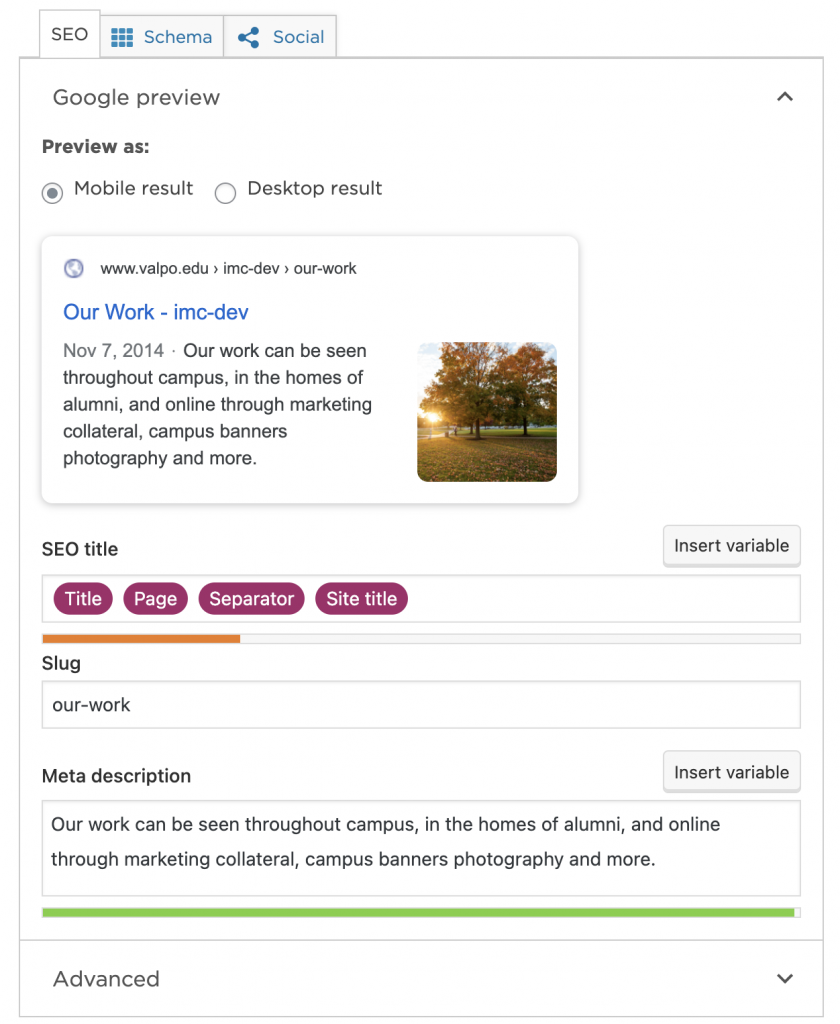SEO Best Practices
Before publishing a page, it is important to ensure your content is following SEO best practices. Below is a basic guide to follow to increase web traffic.
Page Titles
- Create an interesting and engaging title.
- Avoid using a title similar to another page, make sure it is unique!
- Avoid lengthy titles, keep it under 50 characters.
- Try to make your main target keyword the same as the page title.
- If you can not make the page title the same as your keyword due to length or restrictions, its important to include the keyword somewhere in the title
- For example, if our target keyword is “SEO Best Practices” and it is required to have “Valpo” in the web page title, “SEO Best Practices for Valpo” would be a good alternative.
Body Content
- Write content that closely relates to your title/target keyword.
- Use your title/keyword early on in your body content.
- Review your body content and check if its at least 500 words.
- Try to use internal linking (linking to another page on the same website).
- Avoid using link tags such as “click here” or “read more”.
- Try to use the keyword or title of the page you are linking to.
Meta Descriptions
- Create a description for your page that closely reflects your title/target keyword.
- Try to include your keyword/title in the description.
- Keep descriptions under 160 characters.
- For example, on the “Our Work” page, the target keyword/title “Our Work” is used in the description and describes what it is.
- Below is an example of the Yoast SEO section which can be found by editing a page and scrolling down to the bottom of page.
Images
Alt Tags
- Images must have alt tag attributes.
- Be descriptive as possible.
- Use the target keyword of the page for the image tag if it works for the description.
File Size
- Image sizes need to be compressed for optimal page speed.
- Compress the image file size using some of the following:

